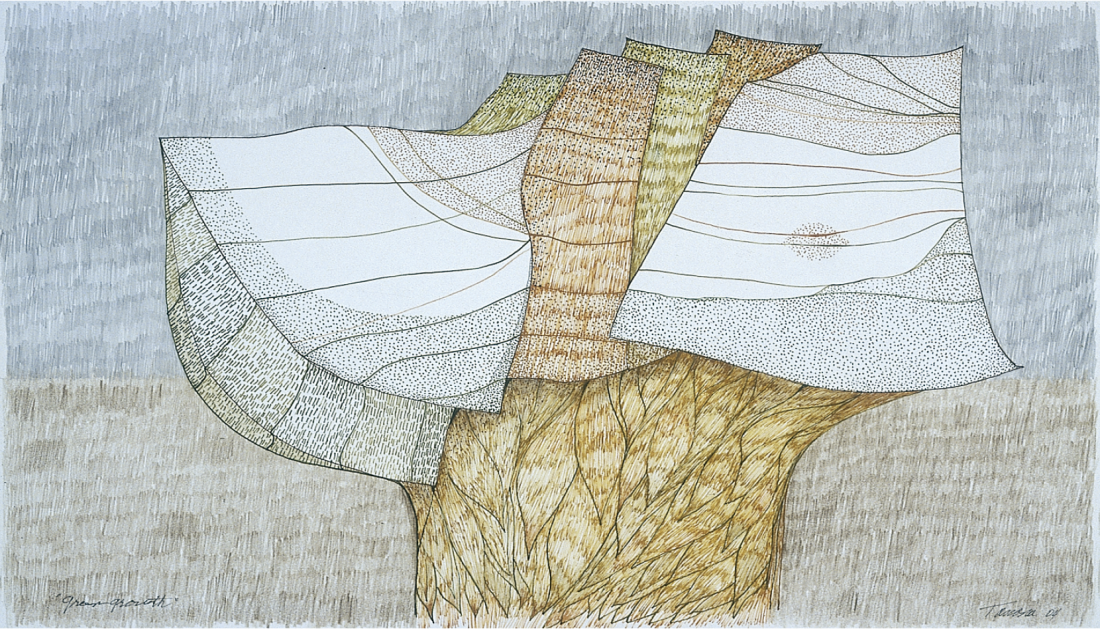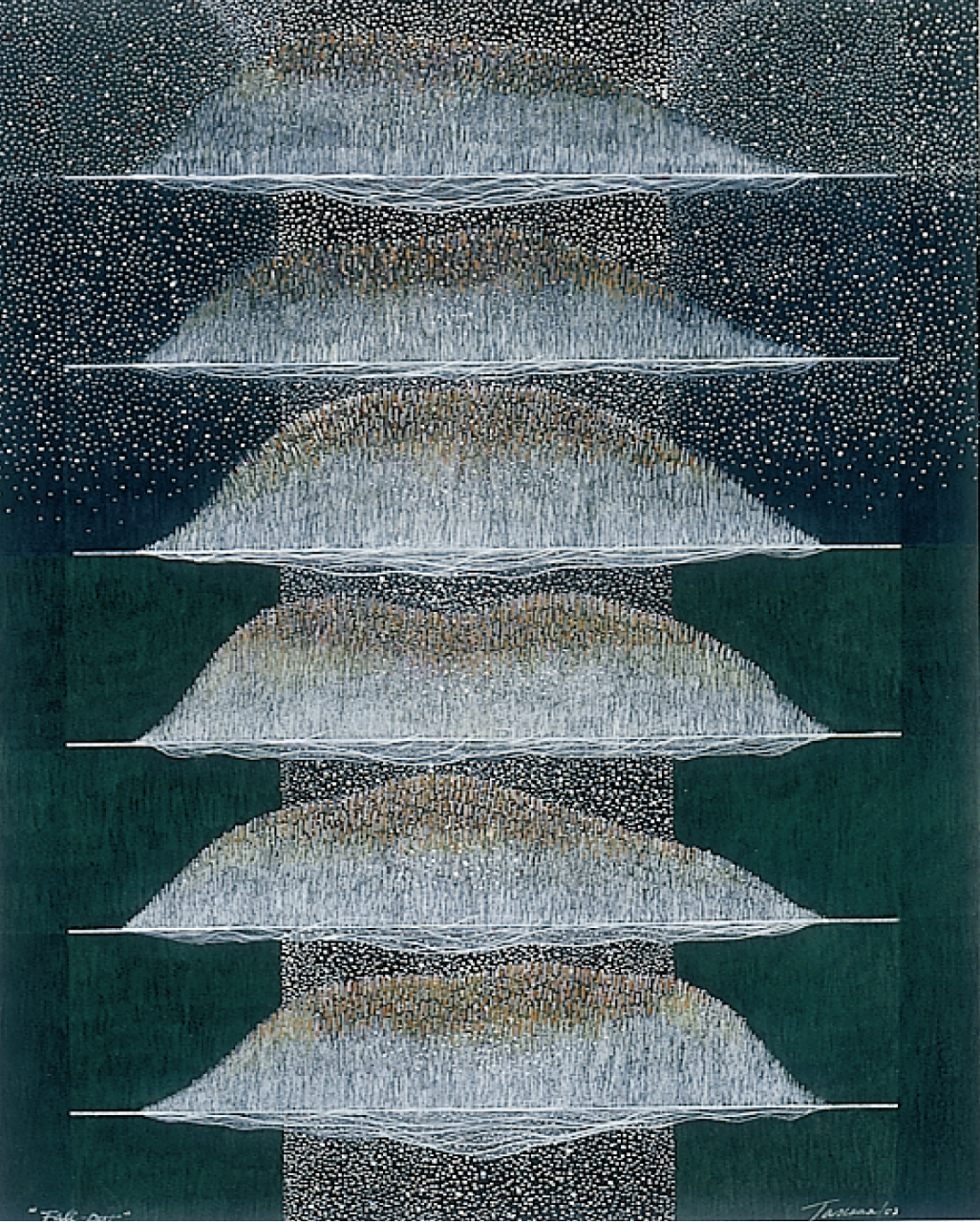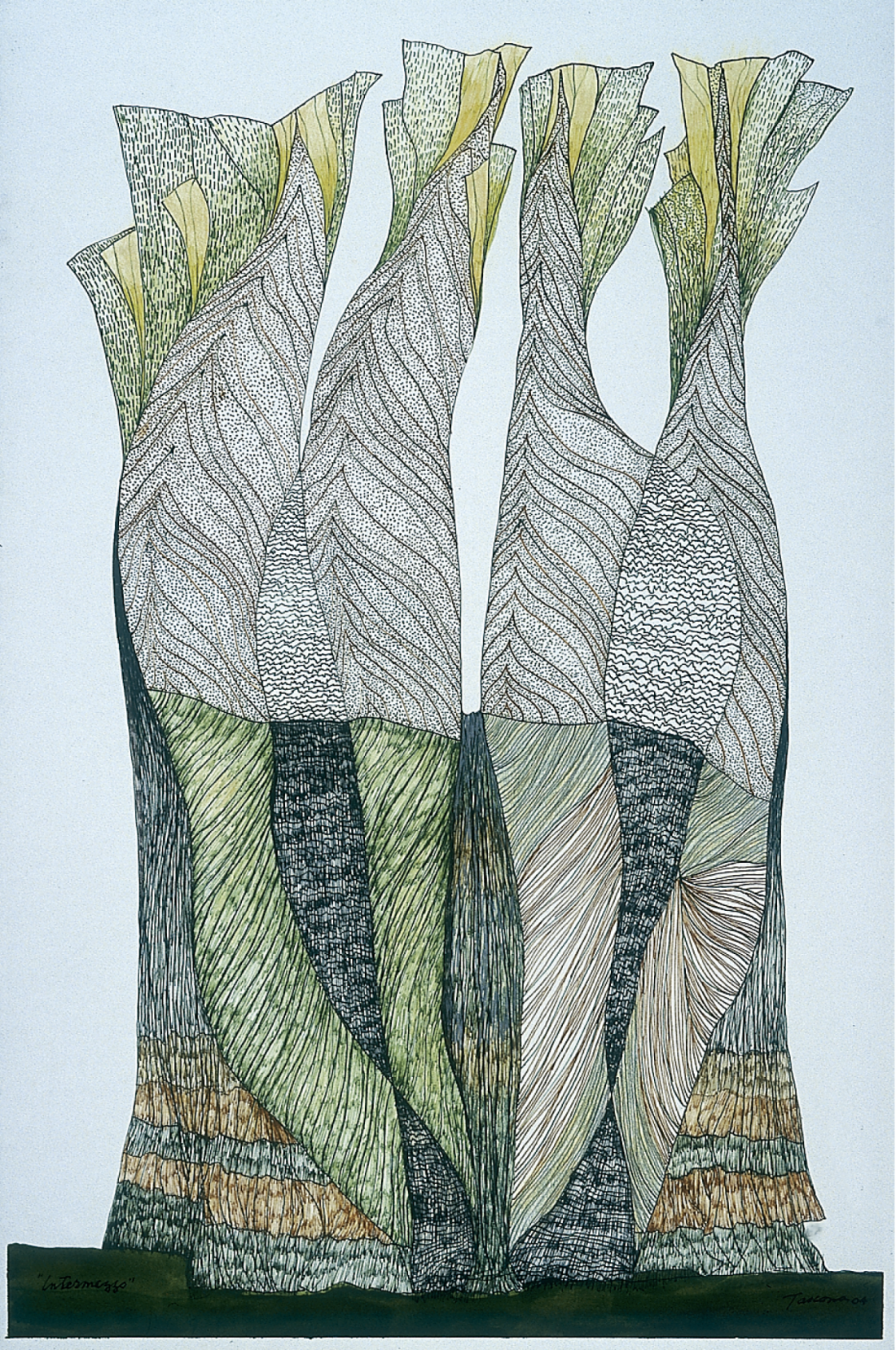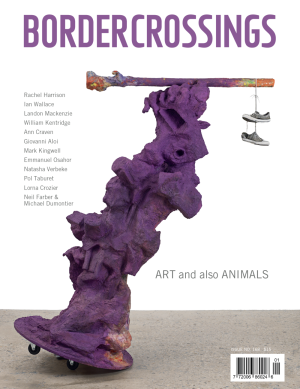Tony Tascona
The opening of Tony Tascona’s exhibition “Transformation” at the Centre culturel franco-manitobain in March 2006, just three months before the artist’s death, included a crush of well-wishers, patrons, collectors, artists of a certain generation and what critic Dave Hickey calls the “looky-loos.” It was as steady and sure a public for art as could be found in Winnipeg; Tascona had always cultivated a following. The former ballplayer, commemorated in the Manitoba Baseball Hall of Fame, the extroverted “godfather,” whose generosity to younger artists is well known, and the imprimateur of many print editions over the years—Tascona the artist— knew how to draw and hold a crowd. Things could not have been more upbeat. It was clear that there was a major art event in progress. Pierre Théberge, director of the National Gallery, had flown in for the event. Tascona was a founding member of Canadian Artists’ Representation. He was a Member of the Order of Canada. He was involved in a steady east-west circulation of art that saw more Manitoba artists curated into important exhibitions in the East. Phrases like “St. Boniface’s native son” circulated in the opening remarks.

Tony Tascona, Green Growth, 2005, acrylic ink and pencil crayon on paper, 15 x 26”. Photographs: Ernest Mayer, courtesy Doreen Millin.
Tony Tascona’s works were especially significant to the visual culture of this city from the 1950s though the 1970s, the public familiar with his cool surfaces and subtle gradations of geometry and his experimentation with painting on aluminium and casting in resin. The Winnipeg Art Gallery mounted a major retrospective in 2001. Many public commissions and permanent installations, notably that at the University of Manitoba Faculty of Law, attest to Tascona’s importance, a star diminished only by postmodernism’s penchant for irony and pastiche. Tascona had been in the thick of things. He graduated from the new University of Manitoba School of Art in the early 1950s. He worked in the aerospace industry and the art studio, blurring the boundaries of fine art and industrial design at a time when optimism and progress allowed both art and science to flourish. He served for a time on the Board of the National Gallery of Canada. Travelling as part of a pack of cowboy modernists in the heyday of post-war modernism, they supported each other and each new body of work. In St. Boniface, the combined 80th birthday celebration, book signing and exhibition of works on paper was a celebration. And not just for longevity. Tascona’s new works on paper are intimate, lyrical and in some cases narrative. They are also things and events. While a far cry from the sleek and intractable surfaces of his high modernist period, this was another iteration of Tascona’s optimism. Pushing past the coat check, the crowd and the stacks of catalogues—it was Tascona at 80, and a delight to see.

Tony Tascona, Fallout, 2002, acrylic ink on paper, 26 ½ x 21”.
An unanticipated playfulness and lyricism characterizes the 32 works in “Transformation,” made between 2001 and 2005. There are many black grounds, which at first glance resemble early Inuit prints from the Eastern Arctic with their irregular black edges and organic shapes. Multiple and competing spatial perspectives, including a ground line register, deep perspective and a bird’s eye, view reinforce the relationship to early Inuit art. In some drawings, sharp lines and small details are incised in white over black to bring the light in. Patterns flow across the page as they describe many three-dimensional natural forms. It’s like a bit of dance with references to ecology and geology, outer space and underwater. Some of the works were created as Tascona remembered a particular boyhood experience, gazing at the ground by the side of the river. Others were made as Tascona asserted the pure joy and immediacy of working with inks that allowed for colour, flow and layering.

Tony Tascona, Intermezzo, 2004, acrylic ink on paper, 26 x 17 ½”.
Sometime after the exhibition, in his studio, talking of dealers, collectors and the art-buying public in Winnipeg, he noted, “I don’t have to please anyone.” With 50-plus years of art-making on the cold prairies and heaps and heaps of honours, indeed, he did not! In the same breath, Tascona spoke appreciatively of early collectors and supporters who shared their art collections with the then young artist. The immense wall of hundreds and hundreds of photographs of family and friends illuminated the centrality of his social life and his gregarious ways. The wall was a fixture in Tascona’s rambling second-floor studio on Provencher Street, an institution in St. Boniface, which hovers over the street-front offices of Canada Post. Over the last few years, Tascona had scaled back—and, like Matisse and Renoir, who in their later years found ways of working that were adapted to their new physical limitations, drawing on paper provided Tascona with a set of manageable parameters, unlike the large cast resin pieces or oversized canvases.

Tony Tascona, The Dance, 2003, acrylic ink on paper, 29 x 17”. 40555p001t116.
As the preferred medium and process of the last five years, there is more storytelling in these small and airy drawings than in Tascona’s sleek abstractions. Here, the characters and the plots are at a slight remove, so that we experience the unfolding and the affect of each drawing without the specificity of concrete reference points. They look like things we know, like portraits of people, or sculptures we have seen. But it is Tascona’s gentle and peculiar tracery that work towards the fabrication and the deconstruction of the illusion. I am reminded of what Tony Tascona said when I met him in his studio. We talked about Tuscan skies, his new drawings and the way in which his study of objects and nature broke down into greater detail. “Nothing is solid,” he intoned. Nothing, perhaps. Yet the keen visual energy and industry of this enormous and prodigious artist remain. ■
Tony Tascona’s “Transformation” was exhibited at the Centre culturel franco-manitobain in Winnipeg from March 2 to April 2, 2006. Tony Tascona died on May 28, 2006.
Amy Karlinsky teaches art in Winnipeg’s inner city and is the chair of Mentoring Artists for Women’s Art.

